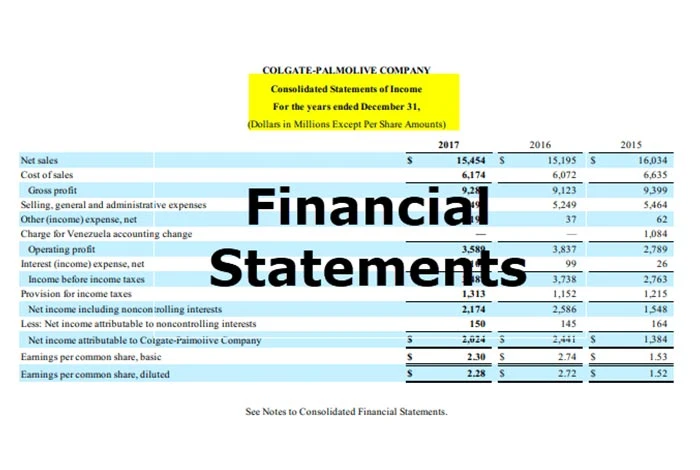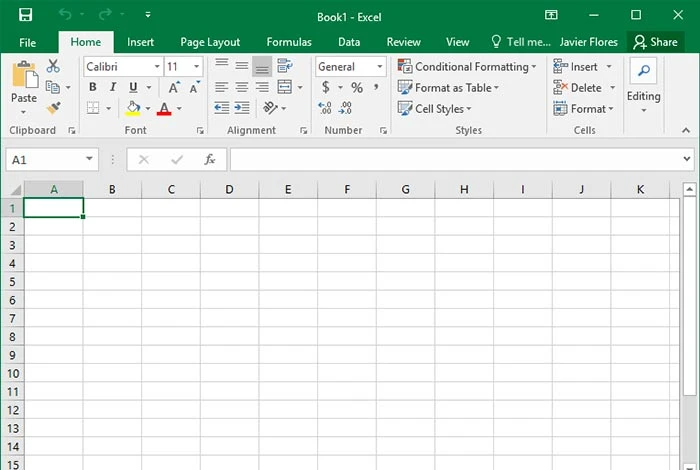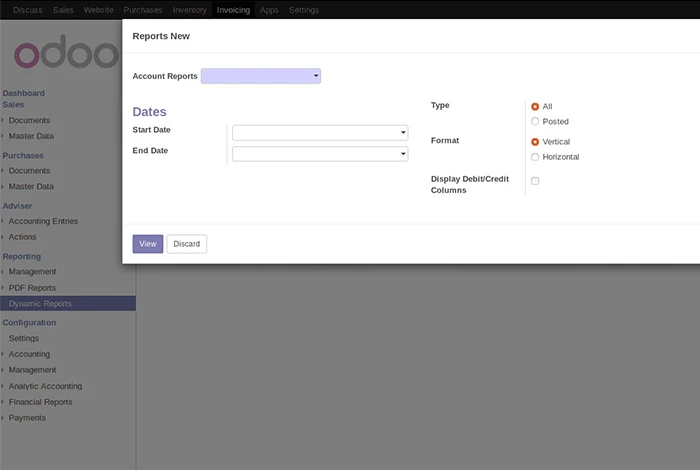Financial statement analysis of a company is important for its creditors, shareholders, investors, top-level management, government, customers, and all other stakeholders. It helps them to assess the financial health of the company and predict its future growth to make informed decisions.
For example, if a company had made sales of 1 Crore and a net profit of 20 Lakh, it brings the Net Profit to 20%. Looks Good, isn’t it? What if the invested capital is 10 Crore? Now the ROI is 2%, which is concerning. Return on investment is just one example of hundreds of parameters that need to be considered in financial analysis.
However, analyzing financial reports to draw an analysis is not easy. Juggling through a pile of numbers and making sense of it is a challenging job. Most often it is done manually, which can be time-consuming, and you might miss out on certain critical numbers. Financial Analysis tools are the most reliable way to study and interpret a company’s balance sheet.
In this blog post, we’ll discuss seven of the best financial analysis tools, and how they can help you make more informed investment decisions. Before we get going with the list, let’s understand about financial statement.
What are Financial Statements?

Financial statements are the reports which are generated by the businesses to show their financial position to the shareholders and other interested parties. It includes balance sheets, profit and loss statements, cash flow statements, and equity statements.
Financial reports give insights into how efficiently a company is managed and whether it is heading toward growth or not. It mentions the total revenue, expenses, assets, liabilities, capital, and all other important elements that represent the performance and current ability of an organization to meet its obligations.
What is Financial Statement Analysis?
Financial statement analysis is the process of carefully reviewing and interpreting a company’s financial statements to obtain an understanding of the financial health of the business. It includes studying past financial data as well as current trends to make informed decisions about the future. It also helps in identifying the financial strengths and weaknesses of a company and provides insights into the company’s future.
Financial interpretation is done to assess the company’s liquidity, profitability, and solvency. It is an important tool for all the stakeholders to get a broader picture of the company’s financial strength and make better decisions.
Financial statement analysis is the process of analyzing a company’s financial reports to get an understanding of the company’s financial health and performance.
Here are different purposes for which different stakeholders need financial report analysis:
- Creditors: It helps in assessing the company’s ability to repay its debts.
- Shareholders: Understanding the company’s profitability and growth prospects.
- Investors: to analyze the company’s current position and predict future growth potential
- Top-level management: Making informed decisions about the company’s financial strategy.
- Bankers: To understand the company’s creditworthiness and assess the risk involved in lending money to the company.
Suggested Read: How to Manage Accounting for Small Business: The Complete Checklist
What is a Financial Statement Analysis Tool?
Financial statement analysis tools are the methods and techniques used to interpret and evaluate the financial reports of an organization. There could be several techniques used for evaluating financial statements like Du Pont analysis, benchmarking, and so on depending upon the objective of the financial statement.
The term “Financial statement analysis tools ” has two different yet related meanings:
- Software: There are programs that allow users to calculate ratios, generate specific reports, find trends, create graphs, etc. for better financial interpretation.
- Methods and Techniques: There are various methods and techniques that can be used to perform the financial statement analysis manually.
Before we get to the list of the best financial statement analysis software, we need to discuss the tools (methods) used to evaluate financial reports. These tools can be classified into three major types:
- Horizontal Analysis or Trend Analysis
Horizontal analysis is the process of analyzing the financial statements of a company over a period to identify trends. It includes studying the changes in the financial position, performance, and cash flow of the company relative to its past performance. This method is majorly used to measure the growth of the company.
For Example: If we look at the balance sheet of a company for the past three years and compare their sales or net profit, we can easily identify whether the company is growing or not.
- Vertical Analysis
Vertical analysis is the process of analyzing the financial statements of a company to identify the relative proportions of different items in the statements. It is also known as common-size analysis as it expresses all the items in the financial statements as a percentage of a common base figure.
The base number could be the total assets, total liabilities, total revenue, or anything else. It is often used to measure the performance of a company and compare it with industry standards.
For Example: If we take the balance sheet of a company can analyze that the company’s total expenses were 50% of its total revenue. This easily conveys that the company earns a good margin on their product’s sales.
- Ratio Analysis
Ratio analysis is a process of analyzing the financial statements of a company to identify the relationships between different items in the statements. It is one of the most used financial statement analysis tools, as it is easy to understand and interpret.
Ratio Analysis is mainly used to measure the performance, growth and overall health of an organization and comparing it with benchmarks or industry standards
For Example: If we take the Balance Sheet of a company, we can calculate the Debt-to-Equity ratio which is a measure of a company’s financial leverage. When debt: equity ratio of a company is low, bankers can confirm or go ahead with the loan.
There are many other financial statement analysis tools like Benchmarking, Dupont Analysis, and so on depending on the objective of the analysis.
5 Best Financial Analysis Tools (Software)
There is a range of software programs available that can help with the financial statement analysis process.
Microsoft Excel

Most people are familiar with Microsoft Excel, and it is a versatile program that can be used for several purposes, including financial analysis. It has a range of inbuilt formulas and functions that can be used to simplify the analysis process. Users can generate charts and graphs, quickly calculate ratio, use if-then-else scenarios, etc. to conduct in-depth interpretation of the financial statement.
The best part about using Microsoft Excel for financial analysis is that most of the financial statements of companies can be downloaded in “Xlsx” format. Even if you are not familiar with all the features, there are plenty of online tutorials, resources and templates that can help you.
Pros and Cons of Using Excel
Pros:
- Easy use of formulas for calculations
- Quick diagrammatic representations
- Good for horizontal analysis
- Filters, pivot tables and other important tools
- A widely used format for creating financial reports
Cons
- Requires comprehensive knowledge of using formulas and tools
- Most of the analysis must be conducted manually
Tally ERP 9/Tally Prime
Tally is a software program that is specifically designed for accounting, audit, and financial analysis, widely used by auditors, accountants, and financial professionals. The financial analysis tool allows users to deeply analyze all the financial reports and generate highly customized reports.
Both Tally Prime and Tally ERP 9 enable users to view and compare historical financials, calculate ratios, set budgets, generate charts, and more. Accountants do not need to feed the financial data into the system for interpretation. It is suitable for all types of financial analysis including trend analysis and benchmarking.
Pros & Cons of Tally
Pros
- Specialized accounting and financial statement interpretation tool.
- Doesn’t require additional data entry
- Easy for sharing and collaboration
- Responsive Financial Reporting
- Highly customized report generation
- Export in PDF and Excel
- Historical data comparison
Cons
- Specialization required
- Only feasible for companies using Tally for accounting
- Expensive to procure
Suggested Read: List of Best 20 Accounting Software for Small Business for 2023 (Features and Ratings)
App4Finance

App4Finance is an online financial reporting tool. The software is designed to help companies and individuals in assessing the profitability, capital structure, solvency, and liquidity of a company or entity. It also uses metrics like ratios and industry benchmarks to assess the performance of the company or entity in its current business context.
This financial report analysis software helps businesses to represent, interpret and analyze balance sheets and income statements as per the Global accounting standards (GAAP and IFRS). Users can simply upload the data in xlsx format and begin automated analysis based on complex business intelligence algorithms. It also recommends corrections and highlights critical areas.
App4Finance Pros & Cons
Pros
- 35+ ratios spread over five performance areas
- Analysis of up to 5 years of financial data
- Reclassification of the entered data
- Automated dynamic components
- Profitability, capital structure and solvency analysis
Cons
- No if-then scenario analysis
- No free trial
- Isn’t compatible with Indian Accounting Standards (IndAS)
FINTIBI
FINTIBI is a cloud-based financial performance assessment tool that provides users with deep insights into the financial performance of their business. The tool is designed to help businesses and professionals to assess the financial stability of a company or entity. It allows users to track their business progress, assess their financial position, and make informed decisions.
FINTIBI financial analyzer uses various metrics and ratios to evaluate the financial strengths and weaknesses of a company or entity. The software is also suitable for conducting trend analysis and setting budgets. It also has a wide range of features like dynamic charts, sensitivity analysis, and Monte Carlo simulations.
FINTIBI Pros & Cons
Pros
- Multi version data entry
- Multiple format Upload option
- Assess financial stability
- 120+ metrics and ratios
- Trend analysis
- Setting budgets
- Scenario analysis
- Completely free
Suggested Read: BRS in Tally: How to Perform Bank Reconciliation in Tally
Cons
- No charts and custom graphs
- Horizontal analysis is though
Zoho analytics

Zoho Analytics is a cloud-based business intelligence and data analysis software that helps businesses make better data-driven decisions. It provides users with an in-depth 360-degree analysis of business data. The software also allows users to create interactive dashboards and perform cash flow analysis and data blending.
Contextual alert is one of the most unique and powerful features of Zoho Analytics. It allows users to get timely alerts about potential risks and opportunities. The software is also suitable for trend analysis and benchmarking.
Zoho Analytics Pros & Cons
Pros
- Pre-built visualizations
- AI powered answering assistant
- Interactive dashboards
- Intuitive user interface
- Cash flow analysis
- Data blending
- Powerful BI and reporting
Cons
- Slight learning curve for new users
- Complex folder navigation
- Limited number of templates for reporting
Conclusion
While all types of businesses need to carefully track their progress and cash flows, some industries need to be much more careful. For example, the restaurant industry is known for its high failure rate, and businesses in this space need to be especially diligent in tracking their financial performance.
Organizations need to evaluate their financial position and performance periodically to make sound business decisions. Financial reporting tools like App4Finance, FINTIBI, and Zoho Analytics provide businesses with deep insights into their financial data. These tools help businesses to track their progress, assess their financial stability, and make better-informed decisions.
Related Categories: Expense Management Software | GST Software | Accounting Software
FAQ’s
What are the 3 tools of financial analysis?
The three primary tools of financial analysis are ratios, trend analysis, and comparisons. Ratios provide insights into a company's financial health, trend analysis reveals how a company's financial performance has changed over time, and comparisons show how a company's financial performance stacks up against its competitors.
What are the 5 methods of financial statement analysis?
The five methods of financial statement analysis are horizontal analysis, vertical analysis, ratio analysis, Benchmarking, and Dupont analysis. Some of these methods could be applied simultaneously for better evaluation depending on the requirement.
What is the purpose of financial analysis?
The purpose of financial analysis is to evaluate a company's financial health and to identify opportunities and risks. Financial analysis can be used to assess a company's past performance, forecast its future performance, and make decisions about things like pricing, investment, and strategic planning.
What are the benefits of financial analysis?
Financial analysis strengthens the ability to track a company's financial progress, assess its financial stability, and make better-informed decisions. Financial analysis can also reveal trends and help to set budgets.
What is the best tool in analyzing financial statements?
There is no one “best” tool in analyzing financial statements. Rather, analysts will use a combination of tools, depending on the company and the information you are trying to glean.
Rajan is pursuing CA with a keen interest in trends and technologies for taxation, payroll compliances, Tally Accounting, and financial nuances. He is an expert in FinTech solutions and loves writing about the vast scope of this field and how it can transform the way individuals and businesses... Read more





























